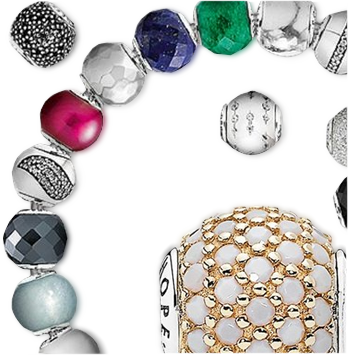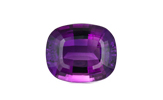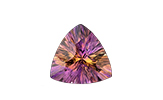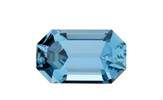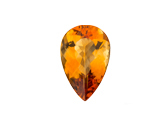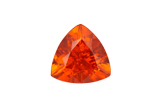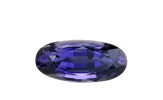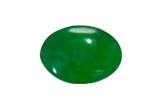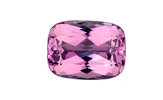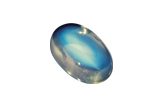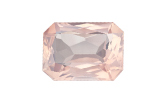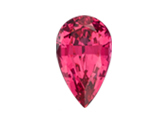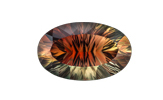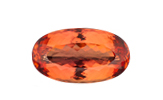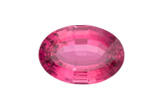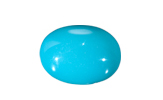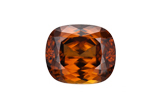Gemstone Guide
Beauty. Rarity. Durability. The attribute that attract the colour gemstones with valuable and its precious. Shop for the best choice of gemstone jewellery with confidence on understanding essential characteristics of gemstone quality.
Gemstones have similar quality factors as diamonds (cut, clarity, colour and cut) and valued differently of each gemstones. Colour is the most important factor of gemstones as it related to the value.
Gemstone Colour
The highest quality gemstones recognise by purity of their hue, the depth of tone, and the colour saturation. The best value is in colours that include ‘slight’ traces of other colours, are not too light or dark, and have a lot of sutured colour. Nearly all gemstones today have been treated to enhance their colour. The most common methods of treatment are heating which always seen with aquamarine, citrine, sapphire, ruby, and tanzanite. The factors relate to a gemstone’s colour:
- Hue: pure colour on the spectrum – the dominant colour and any additional colours visible
- Tone: the lightness or darkness of a colour
- Saturation: the purity of the hue
Gemstone Cut
Gemstones there isn’t an ‘ideal’ cut geometrically configured for maximum brilliance, unlike diamonds. High quality gemstone cut is one that presents the most even colour, exposes the fewest inclusions and displays the majority of the gemstone weight. The sparkle will add beauty of a well cut coloured gemstone. The cut describes its shape and how it is fashioned.
Some gemstones, such as opal are suited to a smooth and rounded surface. While, such as sapphire are frequently shaped with a precise series of flat, symmetrical planes (facets) which make the most pleasing illumination of the gem’s colour.
Gemstone Clarity
The clarity of colour gemstones contributes to their beauty, unless a gemstone is opaque and blocks all light. Some gemstones contain internal inclusion to interrupt the passage of light. Flawless gemstones are very rare and very expensive. The best value in gems that are lightly to moderated included. Emeralds likely to treated with colourless oil, wax, or resin to minimise surface reaching inclusions.
Gemstone Size
The carat weight of gemstone is not necessarily an accurate gauge for gemstone size. While, millimetre size is taken into consideration when matching colour gemstones for jewellery.
Gemstone Enhancement
Majority of gemstones that available on the market, have been treated to enhance their appearance. Some enhancement treatments are almost universal are permanent and require no special care of the gemstone, such as heat treatment to enhance colour. Other treatments are common and may require more or less special care to avoid damage such as infusion of colourless oil, wax or resin to improve clarity. In certain colour gemstones colour occurs naturally. Ruby (red sapphire) is rarity gemstones in natural colour and generally more valuable than enhance treatment ruby.
Gemstone Grading Certificate
While a diamond grading report can help explain the quality factors like colour, clarity, cut and carat weight, same as the gemstone grading report with the additional information of:
- The stone’s characteristics including shape, proportions, finish
- Any known treatments
- Light performance – measuring the brilliance, fire and scintillation of the stone
- Origin of gemstone
- Diagram of inclusion
Diamond and gemstone grading reports are provided by laboratories within jewellery industry. The respected labs that offer gemstone grading reports or certificate:
- America Gem Society (AGSL)
- Gemological Institute of America (GIA)
- The Gem and Jewelry Institute of Thailand (GIT)
- International Gemological Institute (IGI)
Gemstone in Colour
|
Gemstone Colour |
Gemstone |
|
Blue |
Aquamarine, Sapphire, Spinel, Tanzanite, Topaz, Tourmaline |
|
Purple |
Amethyst, Cultured Pearls, Garnet, Sapphire, Spinel, Tanzanite |
|
Orange |
Citrine, Garnet, Opal, Sapphire, Topaz |
|
Red |
Garnet, Ruby, Spinel, Tourmaline |
|
Yellow |
Citrine, Garnet, Opal, Sapphire, Topaz |
|
Green |
Emerald, Garnet, Peridot, Tourmaline |
|
White, Black, Multi-colour |
Cultured Pearls, Opal, Tourmaline |
Gemstone Characteristics
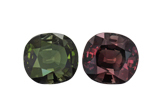 |
Alexandrite The colour change variety of the mineral, chrysoberyl. Bluish green in daylight, purplish red under incandescent light; hard and durable |
|
|
Amber Yellow, orange or golden brown; a fossilised resin inclusion sometimes preserve ancient life |
|
|
Purple variety of the mineral quartz from African and South American |
|
|
Ametrine One of the rarest types of transparent quartz combines with two colours: amethyst’s purple and citrine’s orange to yellow |
|
|
Aquamarine Clear blue to greenish blue variety of the mineral beryl |
|
|
Citrine Colour comes from traces of iron. Popular yellow variety of quartz that ranges from yellow to brown-orange colour |
|
|
Emerald The most valued variety of beryl could from Africa, South America and Central Asia |
|
|
Garnet Found in all colours of the rainbow, know for red, orange and green; colours vary in their rarity |
|
|
Iolite Blue to violet hue, also can display a pale yellow or colourless hue when viewed from certain directions |
|
|
Jade Green jade dates to the pre-historic era and is actually two separate gems: nephrite and jadeite |
|
|
Kunzite Amounts of manganese give the pink to violet variety of spodumene its feminine glow. |
|
|
Lapis Lazuri Royal blue with golden streaks of pyrite; contain several minerals such as lazurite, calcite and pyrite |
|
|
Moonstone A colourless, semi-transparent appearance with a light blue or silver sheen known as adularescence |
|
|
Morganite The pink to orange – pink variety of beryl, a mineral that includes emerald and aquamarine |
|
|
Opal Light diffraction results in a play of many colour; the colour range and pattern help determine its value |
|
|
Onyx The oxide mineral chalcedony contain bands of black and/or white |
|
|
Pearl Perfect shining spheres. Lustrous baroque forms. Seductive strands, warm to the touch. Pearls are simply and purely organic |
|
|
Yellow-green gemstone found in volcanic and mountain rock and meteorites |
|
|
Rose Quartz A rare quartz variety that gets its name from its delicate pink colour |
|
|
Ruby Deep red colour sapphire, known as the ‘King of Precious Stones’ |
|
|
Sapphire Found in variety of colours including yellow, green, orange, pink and purple; prized for their deep blue saturated hue |
|
|
Spinel Source in red and blue, and sometimes confused with ruby |
|
|
Sunstone Sunstone’s (member of the feldspar group) phenomenal varieties show a distinct and lively glitter called aventurescence |
|
|
Tanzanite Lush blue velvet. Rich royal purple. Exotic tanzanite is found in only one place on earth, near majestic Kilimanjaro. |
|
|
Topaz Honey yellow. Fiery orange. Cyclamen pink. Icy blue. In warm or cool tones, topaz is a lustrous and brilliant gem |
|
|
Tourmaline A variety of exciting colours with one of the widest colour ranges of any gem. Including the remarkable intense violet-to-blue gems particular to Paraiba |
|
|
Turquoise Azure sky, robin’s egg blue: Vivid shades of turquoise define the colour that’s named after this gem. . It’s a rare phosphate of copper that only forms |
|
|
Zircon Colourful gems with high refraction and fire. Best known for its brilliant blue hues; also comes in warm autumnal yellows and reddish browns, as well as |


